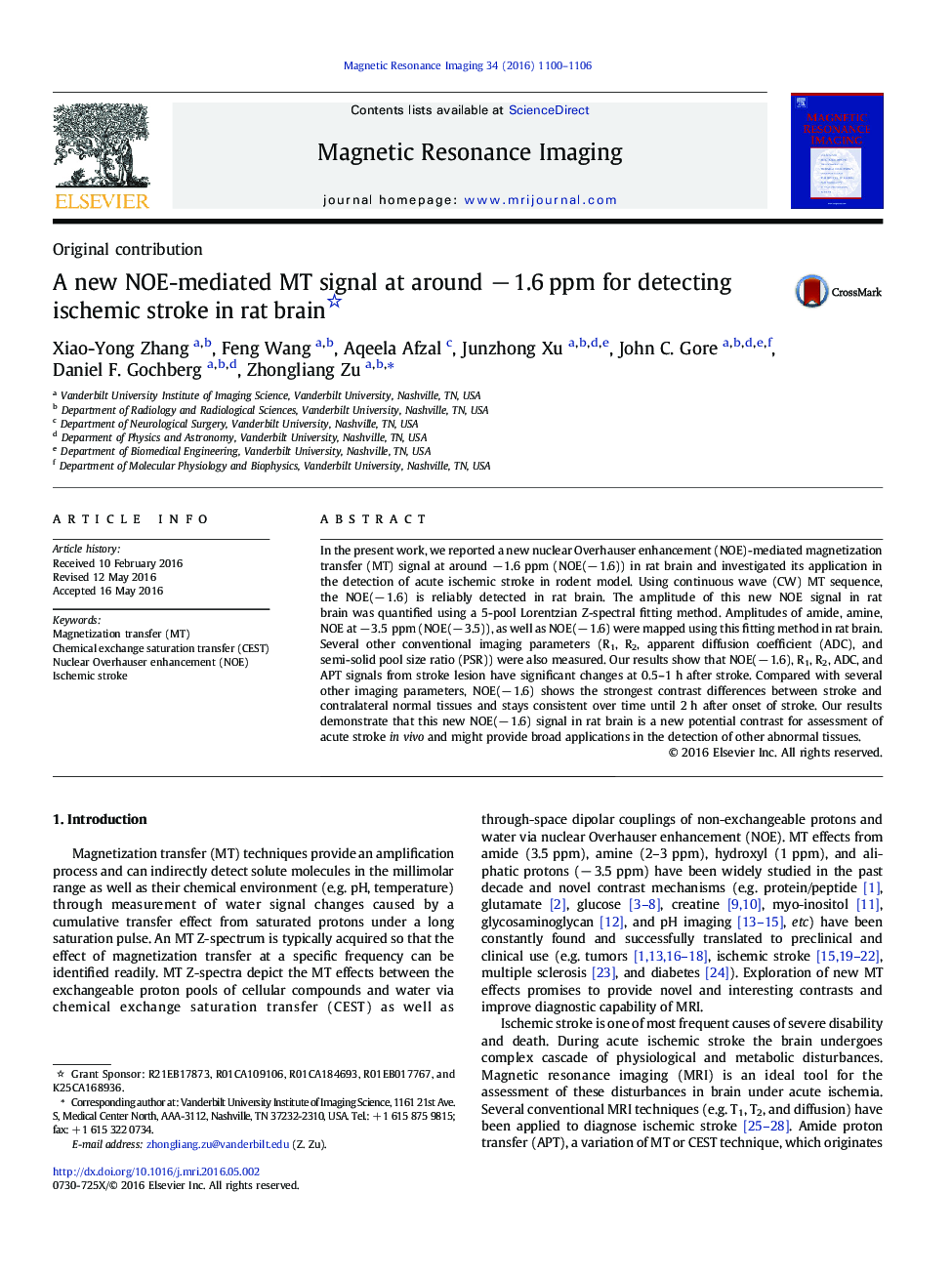| Article ID | Journal | Published Year | Pages | File Type |
|---|---|---|---|---|
| 1806114 | Magnetic Resonance Imaging | 2016 | 7 Pages |
In the present work, we reported a new nuclear Overhauser enhancement (NOE)-mediated magnetization transfer (MT) signal at around − 1.6 ppm (NOE(− 1.6)) in rat brain and investigated its application in the detection of acute ischemic stroke in rodent model. Using continuous wave (CW) MT sequence, the NOE(− 1.6) is reliably detected in rat brain. The amplitude of this new NOE signal in rat brain was quantified using a 5-pool Lorentzian Z-spectral fitting method. Amplitudes of amide, amine, NOE at − 3.5 ppm (NOE(− 3.5)), as well as NOE(− 1.6) were mapped using this fitting method in rat brain. Several other conventional imaging parameters (R1, R2, apparent diffusion coefficient (ADC), and semi-solid pool size ratio (PSR)) were also measured. Our results show that NOE(− 1.6), R1, R2, ADC, and APT signals from stroke lesion have significant changes at 0.5–1 h after stroke. Compared with several other imaging parameters, NOE(− 1.6) shows the strongest contrast differences between stroke and contralateral normal tissues and stays consistent over time until 2 h after onset of stroke. Our results demonstrate that this new NOE(− 1.6) signal in rat brain is a new potential contrast for assessment of acute stroke in vivo and might provide broad applications in the detection of other abnormal tissues.
